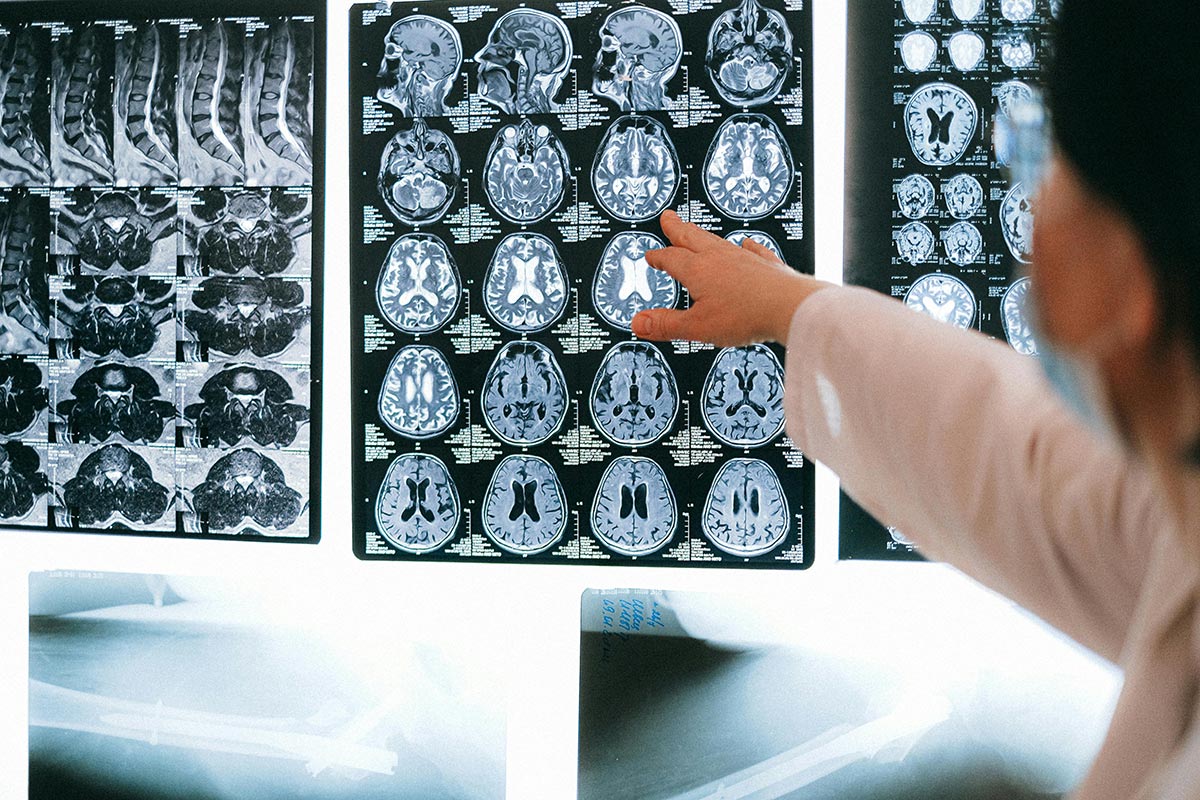
Understanding Transdermal Drug Delivery
Transdermal drug delivery is a method where drugs are administered through the skin to enter systemic circulation. This technique offers various benefits, particularly for patients who prefer alternatives to oral medications.
Skin Barrier and Drug Absorption
The outer layer of the skin, known as the stratum corneum, acts as a primary barrier to drug absorption. Most topically administered drugs face challenges in penetrating this layer due to its protective function. The process through which drugs pass through the skin involves two main mechanisms: passive diffusion and active transport. Passive diffusion occurs when drugs move from an area of high concentration to one of low concentration without the need for energy. In contrast, active transport relies on carrier proteins or energy molecules to facilitate drug movement (Destinations For Teens).
Factors that influence skin permeability include:
| Factor | Description |
|---|---|
| Skin Condition | Health and hydration of the skin |
| Age | Changes in skin structure over time |
| Blood Flow | Increased circulation enhances absorption |
| Skin Metabolism | Variability among individuals |
| Temperature | Warmer skin can enhance penetration |
| Molecular Size | Smaller molecules penetrate better |
Lipophilic (fat-soluble) compounds generally have a higher permeability compared to hydrophilic (water-soluble) substances when passing through the skin barrier. Modulation of skin penetration profiles or the use of specific formulations can enhance drug permeability. This is essential because many therapeutic agents struggle to penetrate the skin adequately without assistance (PubMed).
Enhancing Skin Penetration
To overcome the challenges posed by the skin barrier, various strategies are employed to enhance drug penetration. These include:
Chemical Penetration Enhancers: These substances modify the stratum corneum's structure or composition, allowing drugs to penetrate more easily. They can increase skin permeability by altering lipid compositions.
Physical Methods: Techniques such as microneedling or ultrasound can create temporary openings in the skin, facilitating drug absorption.
Formulation Strategies: Creating appropriate drug formulations can optimize the absorption of active ingredients through the skin.
In cases where skin penetration is not desired, such as for certain topical applications, penetration reducers are used. These agents help to prevent components from entering systemic circulation, thereby keeping the therapeutic effect localized only to the skin surface.
Transdermal drug delivery systems continue to be developed to take advantage of these methods, as they can offer less invasive options for medication administration while bypassing first-pass metabolism. As interest in these delivery systems grows, so does the potential to treat a variety of conditions effectively. For more information about the impacts of drugs and addiction, explore our discussions on addiction on the brain and myths & misconceptions about addiction.
Methods to Improve Skin Penetration
To address the question of can drugs be absorbed through the skin?, various methods exist to enhance skin penetration. These methods can be broadly categorized into chemical penetration enhancers, physical methods for penetration, and penetration reducers.
Chemical Penetration Enhancers
Chemical penetration enhancers are substances that can modify the skin barrier, allowing drugs to penetrate more effectively. These enhancers work by altering the structure of the stratum corneum, which is the outermost layer of the skin.
Some common chemical enhancers include:
| Enhancer Type | Mechanism | Example |
|---|---|---|
| Fatty Acids | Disrupts lipid organization | Oleic acid |
| Alcohols | Increases skin permeability | Ethanol |
| Surfactants | Lowers surface tension | Sodium lauryl sulfate |
These substances can be used either individually or in combination to maximize drug delivery through the skin (PubMed).
Physical Methods for Penetration
Physical methods can also enhance transdermal drug delivery. Techniques like iontophoresis, phonophoresis, and electroporation employ energy to facilitate drug transport across the skin.
- Iontophoresis: Utilizes small electrical currents to drive charged drug molecules into the skin.
- Electroporation: Temporarily disrupts the lipid bilayer of the skin, enhancing drug uptake.
- Ultrasound: Alters skin barrier function to increase transdermal absorption.
These physical techniques can be very effective, especially when used in conjunction with chemical enhancers.
Penetration Reducers
In some scenarios, the goal may be to limit skin penetration. Penetration reducers are employed to prevent certain chemicals from entering systemic circulation. This can be particularly useful in topical formulations where systemic absorption is not desired.
Commonly used penetration reducers include:
| Reducer Type | Function |
|---|---|
| Lipid Regulators | Maintain skin barrier integrity |
| Hydrating Agents | Increase hydration to regulate permeability |
These reducers help maintain the effectiveness of topical treatments by ensuring they act locally rather than being absorbed throughout the body (PubMed).
Understanding these methods of enhancing or regulating skin penetration is essential in the context of drug delivery and addiction treatments, such as nicotine replacement therapy products, which utilize transdermal mechanisms to deliver medication effectively (New Horizons Centers).
Application of Transdermal Drug Delivery
Transdermal drug delivery is increasingly popular for various medications, providing an effective way for individuals to receive treatment while potentially minimizing systemic side effects. This section explores three primary applications of transdermal drug delivery: pain relief medications, hormonal patches, and nicotine replacement therapy.
Pain Relief Medications
Pain relief medications, particularly nonsteroidal anti-inflammatory drugs (NSAIDs) like ibuprofen, lidocaine, and diclofenac, can be effectively administered through the skin via topical creams, gels, or patches. This method allows for transdermal delivery aimed directly at the site of pain, minimizing systemic side effects associated with oral medications.
| Pain Relief Medication | Delivery Method | Absorption Type |
|---|---|---|
| Ibuprofen | Topical Cream | Transdermal |
| Lidocaine | Gel | Transdermal |
| Diclofenac | Patch | Transdermal |
The localized delivery of these medications is advantageous for patients experiencing localized pain while reducing the risks that come with traditional systemic administration.
Hormonal Patches
Hormonal patches are designed to deliver hormones like estrogen or progestin into the bloodstream through the skin. They are widely used for purposes such as birth control or hormone replacement therapy. This delivery method offers a convenient and steady release of hormones compared to oral alternatives (New Horizons Centers).
| Hormone Type | Purpose | Delivery Method |
|---|---|---|
| Estrogen | Birth Control | Transdermal Patch |
| Progestin | Hormone Replacement Therapy | Transdermal Patch |
This method ensures consistent absorption rates, enhancing patient compliance and effectiveness by avoiding the fluctuations associated with oral ingestion.
Nicotine Replacement Therapy
Nicotine replacement therapy (NRT) products, including patches, gums, lozenges, and sprays, deliver controlled quantities of nicotine through the skin to assist individuals in quitting smoking. NRT patches allow for gradual absorption of nicotine into the bloodstream, effectively reducing withdrawal symptoms and cravings during cessation attempts.
| NRT Product Type | Administration Method | Purpose |
|---|---|---|
| Patch | Transdermal | Cessation Aid |
| Gum | Oral | Cessation Aid |
| Lozenge | Oral | Cessation Aid |
| Spray | Nasal | Cessation Aid |
The transdermal approach to nicotine delivery significantly aids in managing withdrawal symptoms, establishing a supportive framework for individuals aiming for a smoke-free lifestyle.
These applications highlight the versatility of transdermal drug delivery systems in managing pain, hormonal balance, and addiction recovery. The question remains for many: can drugs be absorbed through the skin?. The answer is not only yes but also that this method can enhance treatment effectiveness while reducing unwanted side effects.
Benefits of Transdermal Drug Delivery
Transdermal drug delivery systems offer significant advantages for medication administration. These benefits include convenience and prolonged release of medication as well as the potential for reduced side effects.
Convenience and Prolonged Release
Transdermal delivery systems provide a non-invasive and easy method for administering medication. Patients can apply patches or gels without the need for needles or specialized personnel, improving overall compliance (Arms Acres).
These systems can also offer controlled and sustained drug release, allowing for consistent therapeutic levels over an extended period. Here is a table summarizing the advantages:
| Benefit | Description |
|---|---|
| Non-invasive | No needles or injections required |
| Easy application | Simple to use without expert assistance |
| Controlled release | Gradual release maintains steady drug levels |
| Improved compliance | Less frequent administration enhances adherence |
This method minimizes gastrointestinal issues, avoiding the first-pass metabolism that occurs with oral medications, leading to improved efficacy of drugs.
Reduced Side Effects
Transdermal drug delivery can minimize side effects typically associated with oral medications. By bypassing the gastrointestinal tract, it reduces the potential for stomach irritation and other related problems.
Moreover, the targeted delivery method ensures that drugs are delivered directly into the bloodstream without significant loss in potency. This can lead to a more comfortable experience for patients needing ongoing pain management or hormone therapy. The skin's absorption process can enhance the therapeutic efficacy while reducing the overall dosage required, which can also help to limit adverse reactions.
Through these characteristics, transdermal drug delivery emerges as a beneficial approach for managing various health conditions, making it an appealing option for many patients. For further details about addiction and its impact, refer to our article on is addiction a disease?.
Technology Advancements in Drug Delivery
Recent advancements in drug delivery technology have significantly improved the way drugs can be absorbed through the skin. Two noteworthy innovations are nanocarriers for enhanced absorption and microneedle transdermal patches.
Nanocarriers for Enhanced Absorption
Nanocarriers, including nanoparticles, ethosomes, dendrimers, and liposomes, present a promising approach for improving drug absorption through the skin. These structures encapsulate and deliver drugs across the skin's outermost layer, the stratum corneum (Arms Acres). Various nanostructures, such as solid lipid nanoparticles (SLNs) and nanostructured lipid carriers (NLCs), have been extensively researched for their potential in transdermal drug delivery.
Benefits of Nanocarriers:
| Benefit | Description |
|---|---|
| Improved Bioavailability | Increases the amount of drug that reaches systemic circulation. |
| Controlled Release | Allows for gradual release of medication over time. |
| Enhanced Diffusion | Facilitates deeper penetration into skin tissues. |
| Targeted Delivery | Potentially directs treatment to specific areas like hair follicles and sebaceous glands. |
These nanocarriers can enhance drug diffusion and deposition in tissues, making them highly effective for transdermal applications (NCBI).
Microneedle Transdermal Patches
Microneedles represent another cutting-edge advancement in transdermal drug delivery. These tiny needles are designed to penetrate the skin's outer layer without reaching nerve endings, thus minimizing pain. A microneedle patch consists of multiple microneedles that quickly deliver medication into the skin, improving the rate of absorption and providing a more effective drug delivery system compared to traditional patches.
Key Features of Microneedles:
| Feature | Description |
|---|---|
| Minimally Invasive | Provides a painless alternative to injections. |
| Rapid Absorption | Facilitates quick release of medication into the bloodstream. |
| Versatile Applications | Can be used for various medications, including vaccines and hormones. |
Transdermal patches, including those with microneedles, deliver medication directly into the bloodstream, bypassing the digestive system, which helps reduce common side effects associated with oral medications (Atlantis Bioscience). These patches are designed with multiple layers, including a backing layer, drug layer, membrane, adhesive layer, and liner, each serving a specific purpose in controlling the drug's release for absorption.
The innovations in nanocarriers and microneedles enhance the possibilities of effective and efficient drug delivery through the skin, prompting further exploration into their applications in various therapeutic areas. For more insights on the mechanisms of drug absorption and the implications for addiction treatment, refer to our article on addiction on the brain.
Challenges and Considerations
Transdermal drug delivery offers a promising method for administering medications; however, several challenges and considerations must be addressed. Understanding these factors is crucial for optimizing effectiveness and minimizing risks.
Factors Affecting Absorption
The absorption of drugs through the skin is influenced by various factors. Most active agents do not penetrate the skin in therapeutic amounts. Effective transdermal delivery typically requires substances that are of low molecular mass (generally <500 Da) and highly lipophilic, allowing for better permeability through the skin.
The table below highlights key factors affecting drug absorption through the skin:
| Factor | Description |
|---|---|
| Molecular Size | Smaller molecules typically have enhanced skin permeability. |
| Lipophilicity | Lipophilic (fat-loving) compounds demonstrate higher permeability than hydrophilic (water-loving) ones. |
| Skin Condition | Damaged or compromised skin may enhance absorption compared to intact skin. |
| Skin Age | Permeation properties can differ based on the age of the individual. |
| Blood Flow | Increased vascularization can enhance the absorption of drugs. |
| Skin Metabolism | Variability in metabolic processes can influence overall drug absorption. |
| Hydration | Well-hydrated skin presents improved permeability. |
| Temperature | Elevated skin temperatures can enhance absorption rates. |
Factors such as skin hydration, texture, and temperature significantly affect how well substances can permeate the skin barrier (ScienceDirect).
Risks and Misuse Concerns
While transdermal drug delivery presents unique benefits, it also raises several risks and concerns, especially regarding misuse and potential addiction. The option of applying drugs through the skin may increase the risk of attempting to administer higher doses inappropriately, leading to heightened effects. Such usage can lead to dependency on certain substances.
Many medications designed for transdermal use are effective and provide adequate therapeutic relief; however, their misuse can also result in adverse outcomes. Misuse could manifest through:
- Overuse of patches or gels to achieve a more significant effect.
- Risk of skin irritation or allergic reactions due to prolonged exposure.
- Potential for addiction, particularly with pain relievers or stimulants that can be absorbed through the skin.
Understanding these risks is essential for both healthcare providers and patients to prevent misuse and ensure safe practices in drug administration. For a deeper dive into how addiction affects the brain, check out our article on addiction on the brain and explore myths surrounding addiction with our piece on myths & misconceptions about addiction.
.svg)





